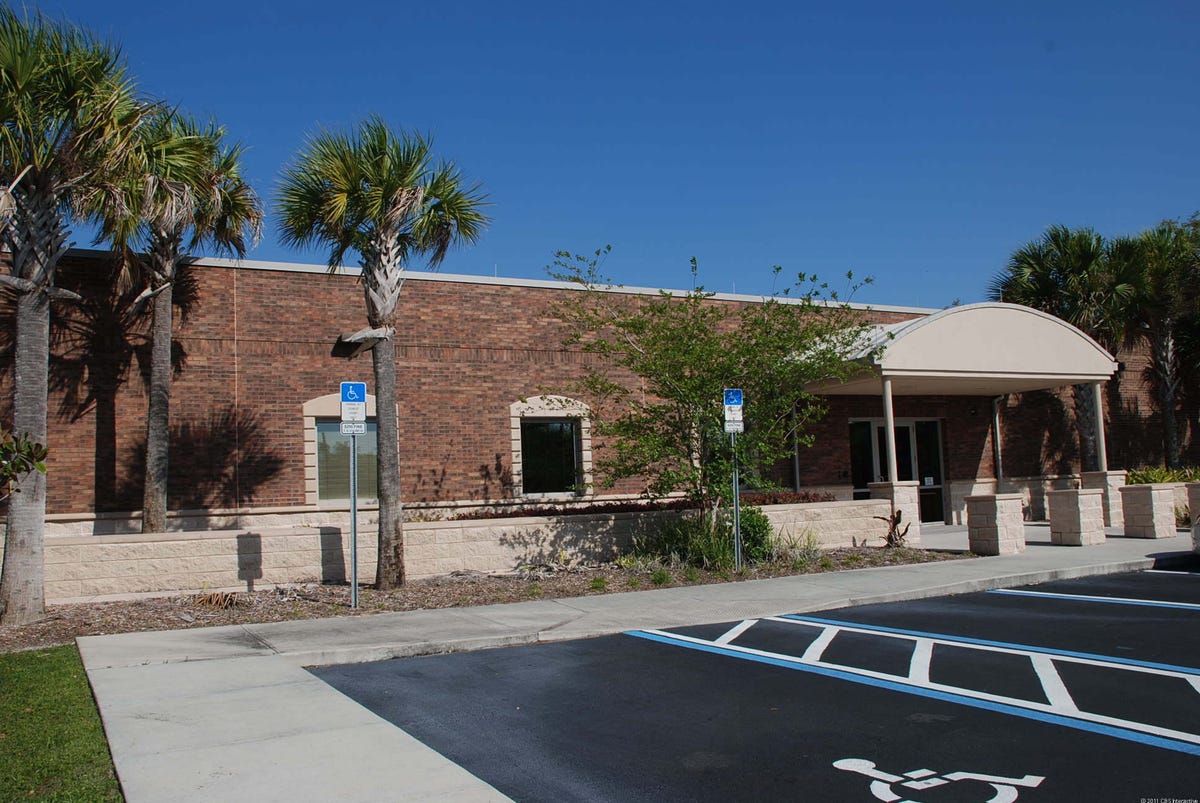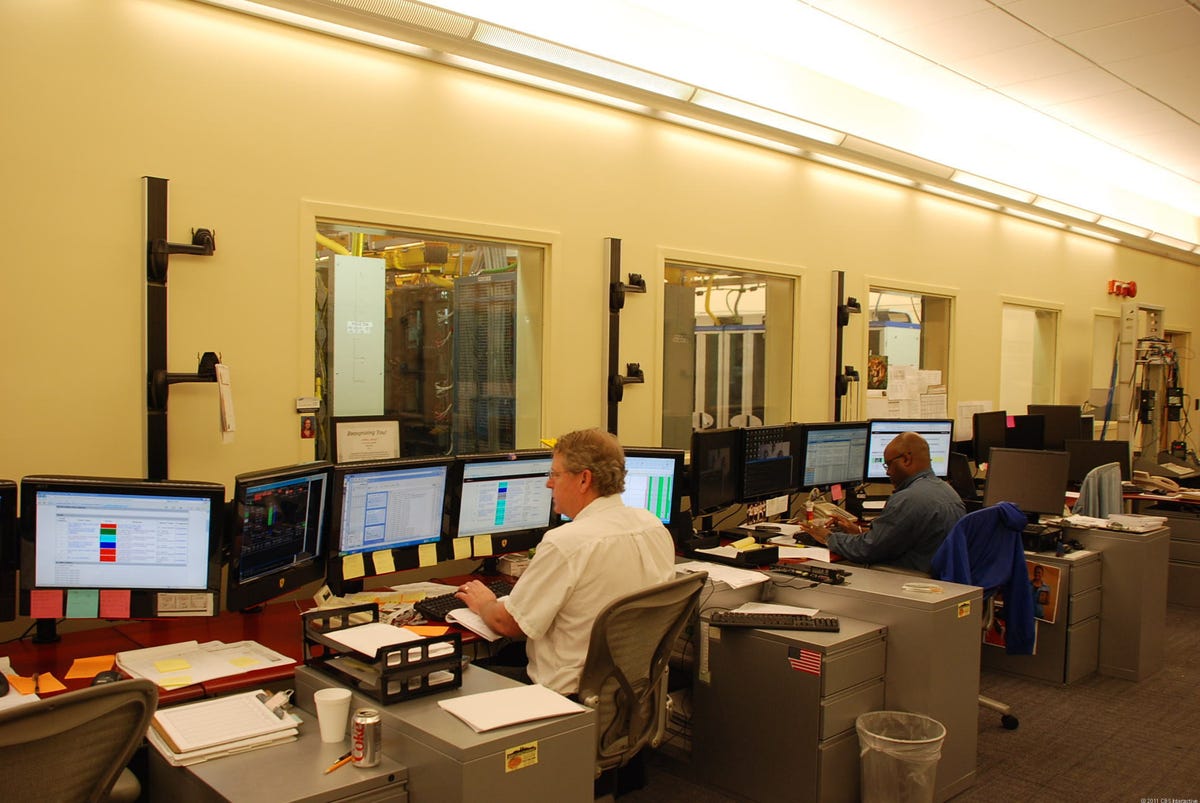
On the second day of CTIA, Verizon Wireless offered wireless-device journalists a tour of its Super Switch in northeastern Orlando. As one of five Super Switches in the state, the 43,000-square-foot facility routes voice and data for the traffic for the central Florida region. And if needed, it can handle the entire state in an emergency.
From the outside the facility could be a dentist's office. The few windows, however, and the barbed-wire fence surrounding the complex tell you that this is a unique place. The Super Switch is built to withstand a Category 5 hurricane. In fact, that certification is the sole reason why Verizon calls it a Super Switch.

Most of the facility's 40 employees work out in the field, so we saw few people on the tour. This is the command center where employees monitor the network and adjust for any disruptions.
A bank of monitors in the opposite well shows the voice and data traffic flowing through the network at a given moment.
The Super Switch is built with redundant systems so if one switch fails, another can take over. Here's a view inside the first switch. There's a lot of empty space outside of the racks of equipment powering the network. The room is surprisingly quiet and spotlessly clean.
One for the more curious sights on the tour was this bank of LG VX6100s. The VX6100 may be almost seven years old--almost an antique as cell phones go--but Verizon is putting them to good use as test equipment for gauging how the network is performing at a given time.
A rainbow of colored wires surrounded us on all sides in the first switch room. Just don't unplug anything.
In case of a power failure, these battery cells will kick in without interruption to power the facility. The room is climate-controlled and set in a giant pan slightly below ground level to keep any battery waste from leaking into the environment in case of an accident.
A 1.5-megawatt generator can keep the batteries fresh if the public power grid is offline for an extended period. Next door is a second generator that can deliver 1.25 megawatts of juice.
These doors guarded the entrances to the generators. Curiously, or perhaps ominously, Verizon let us into the room without hearing protection.
The second switch has much more space for future network expansion.
Some of the newest equipment, like what's pictured here, powers Verizon's growing LTE network.
Wires, wires, and more wires line the ceilings of the hallways. All types of cables, including fiber-optic, are clearly labeled.
The tour ended with a view of the various equipment Verizon uses to boost reception and keep the network running at large public events or in the case of a disaster. If needed, the carrier can haul the generator inside this trailer to another switch facility and keep it running.
These small trailers are called COLTs (cell on light truck). They can be used, for example, to increase coverage at large sporting events.
The truck with the crane is called a COW (cell on wheels). It's similar to a COLT, but with much more power. Next to it is a mobile generator called a GOAT (generator on a trailer).
Outside the facility is a standard Verizon tower.
These cranes have nothing to do with wireless service, but they were roaming the grounds of the Super Switch anyway.

